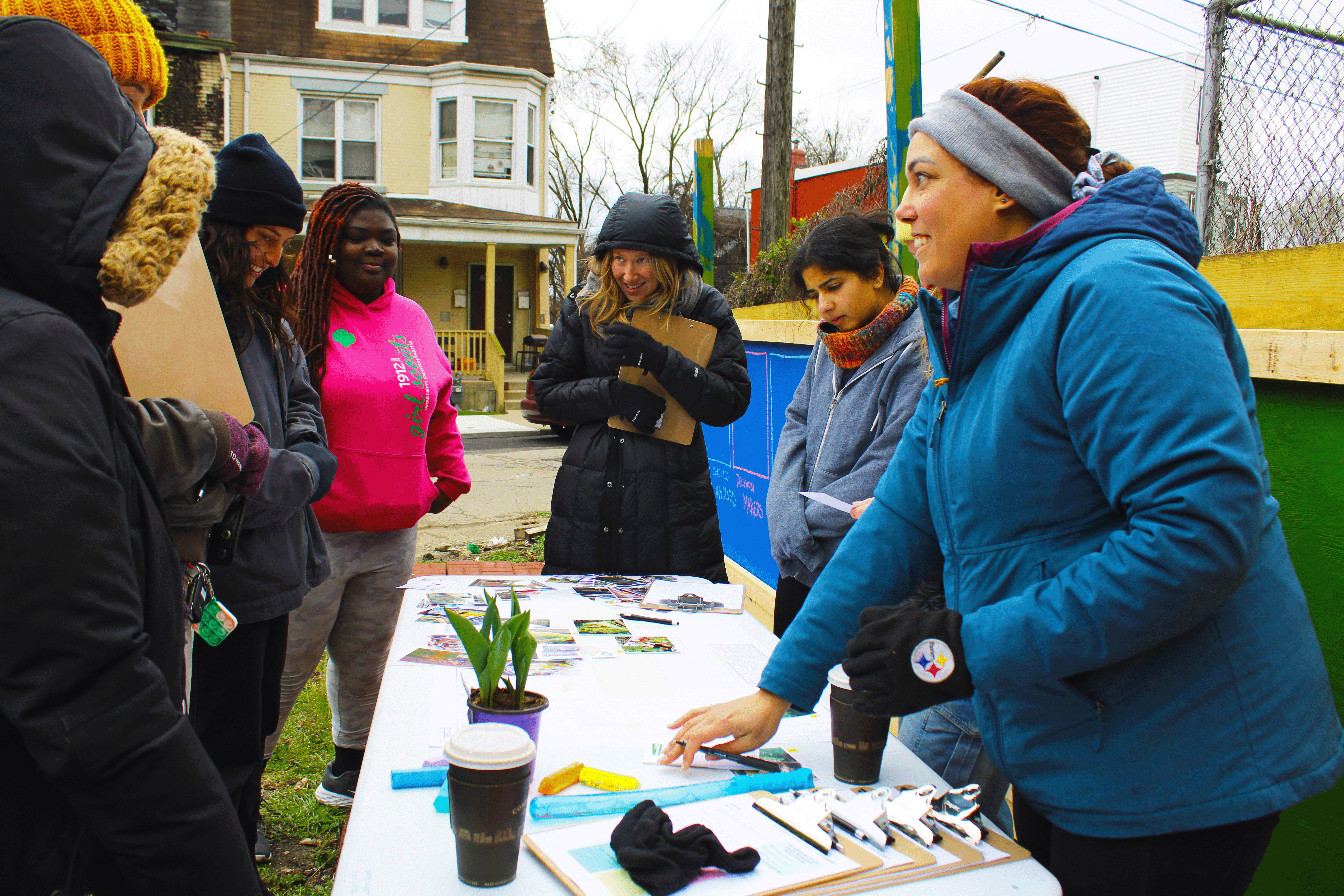Cities across the nation are beginning to recognize that connecting local artists and stakeholders may be more successful … and empowering than traditional planning methods.”
By: Diana Nelson Jones, Pittsburgh Post-Gazette, November 27, 2015
Neighborhood Allies has received a $470,000 grant from the Heinz Endowments and Hillman Foundation to administer public art projects in its six focus neighborhoods in 2016.
A request for proposals is now open for community groups to respond by Jan. 8 on the website of either Neighborhood Allies or its partner, the Office of Public Art of the Greater Pittsburgh Arts Council. A call for artist proposals will follow.
The goal is to plant multiple public art projects lasting for one to two years in strategic sites in the Hill District, Homewood, Allentown/Beltzhoover, Larimer, Wilkinsburg and Millvale.
Community meetings in the coming days will be held at 3:30 p.m. Monday at the Carnegie Library branch at 2177 Centre Ave. in the Hill District; 4-5 p.m. Tuesday at the Millvale Borough Building, 501 Lincoln Ave.; 6 p.m. Wednesday at the Pittsburgh History and Landmarks Foundation’s preservation resource center, 744 Rebecca Ave., Wilkinsburg; 6 p.m. Thursday at the Carnegie Library of Homewood, 7101 Hamilton Ave.; and 6 p.m. Dec. 7 at the Kingsley Association, 6435 Frankstown Road, Larimer.
A meeting in Allentown/Beltzhoover has yet to be scheduled, but any interested group from any of the six areas can attend any of the meetings.
Neighborhood Allies is a regional nonprofit community support center that is focusing its first years of funding on these communities. The organization re-formed from the leavings of the Pittsburgh Partnership for Neighborhood Development early in 2014 and dispenses about $1 million in grants each year. This grant is above and beyond that budget.
The arts project is part of a larger effort to create places that foster community. The coined term is “placemaking,” which ideally enhances and enlivens sites by building on existing assets, cultural or social, to encourage larger efforts to follow.
Each community, working with an artist and the Office of Public Art, will determine where its sites will be and draw more residents into the discussion.
Mary Taylor, placemaking fellow at Neighborhood Allies, said the art will be temporary to allow for “experimentation and leeway. The art is intended to be a catalyst for future development.”
Permanent works require bigger budgets and often alter infrastructure.
“I think also since these places are in transition, the art should also be” transitive, said Renee Piechocki, director of the Office of Public Art. “And it is not appropriate to saddle a community group in a neighborhood that is changing with maintenance of a work of art.”
The program will include a series of placemaking workshops and design studios once the communities and artists come together. The planning for the projects will begin in May, she said.
The long-term goal, if the pilot goes smoothly, is to make these workshops a Placemaking Academy for replication throughout the region, Ms. Taylor said.
“Cities across the nation are beginning to recognize that connecting local artists and stakeholders may be more successful … and empowering than traditional planning methods,” said Neighborhood Allies president Presley Gillespie.
Community groups that apply for inclusion must have an active board but do not need to be nonprofits.
Diana Nelson Jones: djones@post-gazette.com or 412-263-1626.

